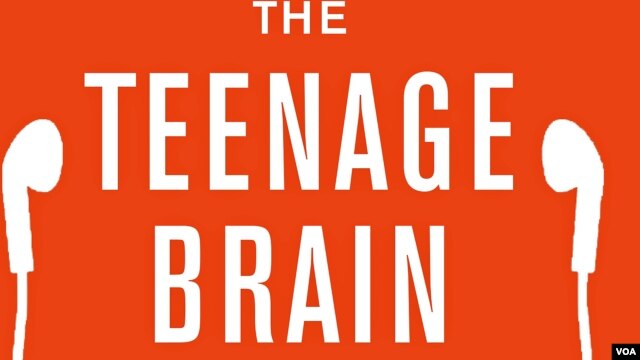 Neuroscientist Frances Jensen has been studying the human brain for almost all of her career. But even she wasn’t ready for the challenge of two teenage sons. Her challenge: try to find out why smart and responsible teenagers also act impulsively and engage in high-risk behaviors.
Neuroscientist Frances Jensen has been studying the human brain for almost all of her career. But even she wasn’t ready for the challenge of two teenage sons. Her challenge: try to find out why smart and responsible teenagers also act impulsively and engage in high-risk behaviors.
So, she did what any scientist would do… she studied a decade’s worth of brain research. Her findings dispel some myths and also provide a bit of help for parents, teachers and other adults trying to understand.
Teen brain — a work in progress
When they reach puberty, their bodies change and teens look like adults. The assumption is their brain also is like an adult brain.
Not true, Jensen said. «The brain is the last organ in the body to mature. It takes into mid-20s for it to complete.” The chemistry and structure of the teenaged brain is only about 80% of its final form.
In her new book, The Teenage Brain: A Neuroscientist’s Survival Guide to Raising Adolescents and Young Adults, Jensen outlines the strengths and weaknesses of the brain at this stage of development. She said the way their brain is wired makes teens better learners than adults.
“It’s coming down from a high on learning that happens in childhood, something we call ‘synaptic plasticity,’ which means that the synapses, where your brain cells talk to each other, are how you learn,» said Jensen. «So you build bigger synapses when you learn something.
«The proteins and the chemicals involved in building synapses for learning are at very, very high levels in the child, and a little bit less in adolescents and then come down to sort of adult levels, which is why a child can learn two, three languages flawlessly and a teenager is pretty good, not quite as good as a child, but better than an adult in terms of the rate at which they can learn and absorb information.”
The paradox is that while teens have an enhanced ability to learn, the connections among different areas of the brain are still developing.
“Your brain cells send out processes so that your brain areas can talk to each other. This process requires signals to go through the brain. These processes need insulation,» said Jensen.
«And the insulation we have is a fatty natural substance called ‘myelin.’ It takes two-and-a-half decades to finish the job. They are working from the back of your brain to the front. And what do you think the last place to connect up fully to have these processes completed for fast transmission is? [It’s] the front of your brain. And what’s in the front of your brain? [it’s] the frontal lobes,” she said.
The frontal lobes of the brain are responsible for insight, judgment, impulse control and empathy, things a teenager has a hard time putting together.
“So we have a very active brain, on one hand, able to learn, but it’s being driven by a driver who doesn’t really have full access to the brakes yet,” she said.
IQ and bad habits
Jensen says that things like drugs and alcohol can have a much more serious impact on the teen brain than the adult brain.
“Your IQ can change up or down between 13 and 17 [years old]. We don’t quite know what specifically can make an IQ go up or down, but one thing that we know does make IQs go down is certainly exposure to certain drugs, for instance chronic pot smoking; the more you smoke, the lower your IQ will be between that time window.»
So while we tend to think that teenagers are so resilient, neuroscientist Jensen said they are and they aren’t.
“There are certain things that can affect them long term,” she explained. “The same amount of experiences like stress or alcohol or pot, an adult may sail through it — for the same exposure — but a teenager will bear a long-term problem based on that.”
Boys, Girls and Multitasking
A recent study reveals a short-term problem for teens: multi-tasking. That sensory overload can hinder their ability to recall words. “In this study,» Jensen reported, «the ones who were given all sorts of distractions as they were trying to learn a task, they still did worse than the kids that were given the same learning experience without distraction. So teenagers can think, ‘Oh, I can learn and do that all at the same time.’ No, it’s still an issue for their brain. There is a limit.”
There is also a gender difference in brain development. Jensen said the part of the brain that processes information expands during childhood and then begins to thin, peaking in girls at around 12 to 14 years old and in boys about two years later. She compares a 13, 14 or 15 year-old-girl and a 13, 14 or 15 year-old boy.
“Of course there are individual exceptions, but we can say in general, the girls are probably more planners, able to sort of navigate through complex sort of scheduling and things, whereas planning isn’t a boy’s big strength at this point of their life.”
Sleepy Brain
And while sleep is important for learning and memory, teens — both boys and girls — often don’t get enough. When they stay up late at night and wake up late in the morning, parents may think it’s just because teens are lazy.
That is another myth, Jensen says. They are just being teens. “Their biological clocks are absolutely programmed to be 2 to 3 hours later for the sleep start time and wake time than adults.» Adults get a surge of melatonin, the hormone produced by the brain that helps make you sleepy, around 8:30. It typically doesn’t not hit teens until closer to 11 p.m. “So they’re not ready to go to sleep yet until midnight,» Jensen pointed out. «Likewise they have to go through the whole 8 to 9 hours of sleep in order to have a healthy brain.» Waking up at 6:00 in the morning to get ready for school is like an adult getting up at 3:00 a.m.
«It’s probably not the optimal time for their brains to be put in a learning environment,» she said.
Parents: be patient and vigilant
All the new information about the teen brain can help adults do a better job as teachers and parents.
“Stay connected and also be a little bit more patient,” Jensen advises adults. “This is the first generation in which we’ve known very much about the unique aspects of the adolescent brain; the strengths and weaknesses. Also, it’s during these teenage years that mental illnesses can first strike: bi-polar, depression or schizophrenia. We see these things coming at 18, 19, 20 or early 20s. That’s another reason to stay connected and know how to look for the warning signs.”
Jensen also encourages parents to share such information with their kids. “In teenage years, they’re trying to learn who they are, to figure out their identity They have a natural interest in anything about themselves that can be told, so when you start telling them about the biology of their maturation state, you’re be surprised how quite interested in it they are.”
http://www.voanews.com/content/understanding-the-teen-brain-is-key-for-better-parenting/2622118.html



